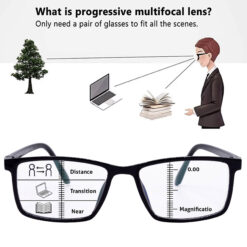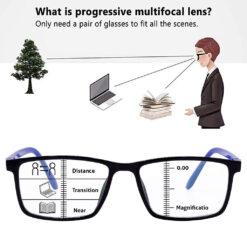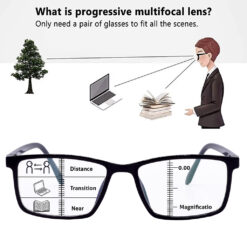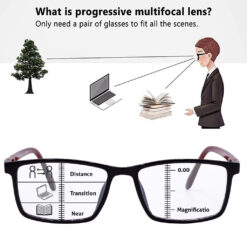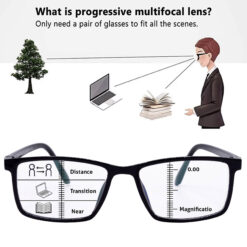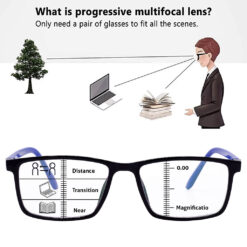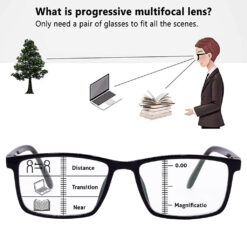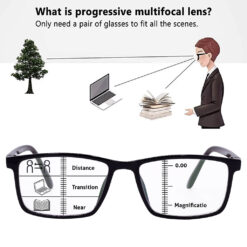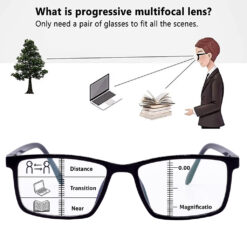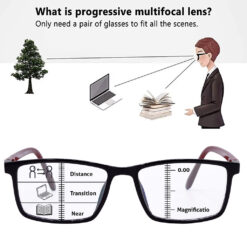Progressive Reading Glasses
Progressive Reading Glasses
Progressive Reading Glasses
Progressive Reading Glasses
Progressive Reading Glasses
Progressive Reading Glasses
Progressive Reading Glasses
Progressive Reading Glasses
Progressive Reading Glasses
Progressive Reading Glasses
Progressive Reading Glasses
Progressive Reading Glasses
Progressive Reading Glasses
Progressive Reading Glasses
Progressive Reading Glasses
Daily use reading glass that fits life, not the other way round
Buying a daily use reading glass should feel simple: pick the right power, choose a comfortable frame, add the coating that cuts glare, and get on with reading, working, and scrolling without squinting or headaches, and that’s exactly what this category is built for—clear near vision, lightweight comfort, and smarter options like blue cut and anti‑glare for screens, so whether it’s reading specs for books, single vision glasses for documents, or computer reading glasses for longer work sessions, the goal stays the same: effortless clarity from the first tap to the last message.
Why daily use reading glass makes everyday tasks easy
Daily use reading glass takes the strain out of close-up tasks—think texts, recipes, invoices, and forms—by bringing crisp focus back at near distances, and that means eyes don’t fight the blur, attention stays on the task, and small print feels manageable again, especially when coated properly for glare and tuned for the distance used most, like 35–60cm for mobile and laptop, which many people spend hours on daily.
Signs it’s time to move to reading specs
A few signs show up consistently: stretching the arm to read, needing brighter light, mild headaches after screen time, and letters that shimmer or double at near, and these often begin around the late thirties to forties as focusing flexibility changes—a normal progression called presbyopia—making a simple pair of reading glasses the easiest way to regain comfort without affecting distance vision.
Daily habits that benefit from single vision glasses
Single vision glasses optimized for near work help with reading books, mobile use, spreadsheets, crafting, cooking, and long email sessions, and when combined with anti‑glare or blue cut options, they reduce reflections and perceived harshness from LEDs and screens to keep eyes fresher through the day and into evening, particularly for multitaskers who switch between phone and laptop frequently.
How to choose reading glasses power with confidence
Picking the right power starts with typical near distance: most people read between 35–45cm, while laptop work leans closer to 50–60cm, and that difference matters because power should match the task distance—slightly lower power for longer reach screens, slightly higher for close reading—so expectations meet real daily use without over-magnifying.
Age-based starting points vs personalized needs
As a practical start, many buyers around 40–45 try low powers like +1.00 to +1.50, those closer to 50–55 often test +1.50 to +2.00, and beyond that range may consider +2.00 to +2.50, but individual comfort varies with arm’s length, lighting, and the exact distance of the reading habit, which is why a quick test at reading distance is still the best check before finalizing.
The 60‑cm rule for mobile and laptop reading
For screens placed around 55–60cm, a slightly lower power than book-reading power often feels more natural, because the focal point sits farther than a paperback in hand, easing the transition between phone, keyboard, and display without the sensation of “too strong” magnification that can cause dizziness at first use.
Quick self-check to narrow power range
Open a text passage at the usual reading distance, try two adjacent powers (say +1.50 and +1.75), and pick the one that feels clear without strain or edge distortion; if both feel equal, choose the lower for screens at 55–60cm and the higher for 35–40cm print work, then give eyes a few days to adapt as magnification becomes familiar.
Blue cut vs anti‑glare: what actually changes on screen
Blue cut lenses filter part of the higher-energy visible range that can feel intense in evening screen sessions, while anti‑glare (anti‑reflective) coatings mainly tackle reflections from overhead lights and screens themselves; together they can reduce perceived eye strain and visual noise, especially after dark or under bright office LEDs.
When to pick blue light blocking reading glasses
Blue light blocking reading glasses help for late-night screen time by reducing the bright, cool cast that can disrupt pre-sleep comfort, making scrolling and reading less stimulating visually; users often report easier wind-down and fewer headaches from prolonged screen glare when the filter is part of the routine.
When anti‑glare is the better first upgrade
If reflections from monitors and tube lights are the main irritation, anti‑glare is the most noticeable first step since it cuts the mirror-like bounce that makes eyes work harder to maintain focus, improving clarity and contrast for text and fine details during extended work hours.
Can both be combined in prescription reading glasses?
Yes—blue cut and anti‑glare are commonly combined in prescription reading glasses to handle both spectral intensity and reflection, and this combo is especially useful for computer reading glasses aimed at productivity without the sparkle and halo issues that plain lenses may show under indoor lighting.
Frame styles that feel good and look sharp
Comfort starts with weight, balance, and nose-pad design, while style shapes first impressions—clear acetates, thin metals, geometric fronts, and gentle cat-eye lines are all popular because they balance presence with all-day wear, and the right bridge fit prevents slipping when reading on mobile or bending forward at a desk.
Reading glasses for women and ladies spectacle frames
Reading glasses for women lean into soft cat-eye edges, slim rectangles, and light crystal tones that brighten the face without overpowering features; ladies spectacle frames also pair well with blue cut for digital days, keeping the look elegant while reducing harsh screen feel in the evenings.
Mens reading glasses and stylish glasses for men
Mens reading glasses often favor minimal, squared, or geometric profiles in lightweight metals or matte acetates—stylish glasses for men that sit steady, don’t pinch at the temples, and suit daily wear across work calls and weekend reading, with anti‑glare as a practical default for clearer text under mixed lighting.
Lightweight reading glasses materials that don’t slip
Materials like thin acetate, stainless steel, and flexible alloys help keep pressure low on the nose, while adjustable pads fine-tune the contact points—an easy win for anyone switching between screens and books during the day, where micro-slips can become distracting.
Lens options for different routines
Different routines need different setups—book readers benefit from crisp single vision near powers, desk workers often prefer computer reading glasses tuned for monitor distance, and frequent phone readers appreciate slightly lower powers that keep the whole screen in a comfortable window without head bobbing.
Computer reading glasses for longer desk hours
Computer reading glasses target the 55–65cm zone many monitors sit in, allowing sustained focus on text, cells, and design elements with less squinting; pair them with anti‑glare to reduce haloing and reflections, or add blue cut for late-evening sessions to soften the cool cast of LED backlights.
Reading glasses for mobile use and travel
For mobile reading and travel, compact lightweight reading glasses with sturdy hinges and smudge-resistant coatings feel practical—clear at 35–45cm, easy to pocket, and ready for quick reads of messages, tickets, and maps without hunting for bright light or perfect angles.
Single vision glasses vs progressive alternatives
Single vision glasses serve a specific distance exceptionally well, while progressive alternatives blend multiple zones for near and intermediate; single vision reading specs keep things simple and sharp for dedicated close tasks, making them a go-to for straightforward daily use reading glass needs.
Affordable reading glasses vs premium: what you really get
Affordable reading glasses deliver reliable magnification and basic clarity for daily reading tasks, while premium options add coatings, lighter frames, and more refined optics that stay comfortable longer and resist smudges and scratches better over time—small upgrades that feel big after hours of use.
Best budget reading glasses: where to save smartly
Save smartly on frames by choosing a lightweight, durable standard material and prioritize one coating based on use—anti‑glare for office lighting or blue cut for evening screen time—keeping the total low while still improving everyday comfort and readability.
Upgrades that pay back daily (coatings, weight, clarity)
Anti‑glare reduces reflections so eyes track text more easily, blue cut softens evening screens, and lighter frames reduce nose pressure marks—together these upgrades make daily use feel effortless, especially for those who read or work in front of screens for long stretches.
When to switch to prescription reading glasses
Consider prescription reading glasses when simple readers don’t feel balanced between eyes, when astigmatism or specific corrections are needed, or when a combined blue cut plus anti‑glare setup is desired with exact powers for desk, document, and device distances.
Style and design: latest chashma design updates
Designs trending now bring clean lines, gentle angles, and airy profiles that frame the eyes without heaviness; clear acetates, sleek metals, and subtle color pops keep reading specs modern and versatile, pairing equally well with formal wear and casual day-to-day outfits.
Womens glasses trends to try
Oversized but featherlight shapes, soft cat-eye corners, and slim oval-rect hybrids look fresh and flattering, especially in translucent tones or smoky gradients that add depth while staying easy to match with daily outfits and work calls.
Mens minimal and geometric looks
Geometric rectangles, softened squares, and thin double-bridge designs stay popular for men seeking a sharp yet understated presence—styles that won’t distract on video calls and still feel current off-duty.
Color tints and clear frames for subtle flair
Clear frames keep attention on the eyes, while soft tints like tea, smoke, or slate bring character without overpowering; both choices pair well with anti‑glare, which maintains clarity in bright indoor spaces.
Comfort checklist for daily use reading glass
Comfort is the sum of small wins: a bridge that sits without pinching, temples that hug without pressure points, featherlight fronts that stay in place even when glancing down, and lenses that don’t reflect room lights back into the eyes during reading and screen time.
Nose pads, temple fit, and frame weight
Adjustable nose pads and well-shaped temple tips help keep the frame stable across long sessions, while lighter materials reduce red marks and sliding—key for anyone reading on mobile or leaning forward during work blocks.
Glare control in indoor lighting
Anti‑glare coatings reduce the layer of reflection that otherwise sits between eyes and text, leading to clearer, calmer reading under LEDs and mixed lighting setups common in homes and offices.
Easy-clean coatings for smudge control
Smudge-resistant coatings make quick cleans with a microfiber cloth truly quick, protecting clarity without constant rubbing and reducing the micro-scratches that can build up over months of daily use.
Care tips: keep clarity high for years
Rinse lenses before wiping, use a microfiber cloth, keep a slim case handy, and avoid hot dashboards—these habits protect coatings, preserve sharpness, and keep daily use reading glass feeling like new even when used all day, every day.
Microfiber habits that prevent micro-scratches
A simple rinse and gentle microfiber wipe removes dust before it can grind into coatings; this small step pays off over time, especially with anti‑glare layers that keep reflections down but need clean surfaces to do their best work.
Storage and travel best practices
Use a compact hard case when moving between desk, bag, and sofa—frame alignment and lens surfaces stay protected, which maintains comfort and optical performance for the long haul.
Reading glasses for work and study
For long study or work sessions, pairing the right power with blue cut or anti‑glare can make the difference between cruising through tasks and eye fatigue; desk setups benefit from computer reading glasses tuned to monitor distance, while evening readers often prefer blue cut to soften late screens.
Blue light blocking reading glasses and sleep routine
Filtering blue-heavy light in the evening can support a smoother wind-down by reducing the intensity that keeps the brain alert, helping late-night readers feel less wired and ready to switch off screens sooner.
Anti-glare reading specs for long spreadsheets
Anti‑glare reduces ghost reflections across monitors and overhead lights, improving focus on small cells and tight fonts so eyes can sustain accuracy longer without micro-squints and constant angle adjustments.
Screen distance and posture pairing
Match lens power to real desk distance and raise the screen to eye level; this combination reduces forward head tilt and keeps the focal zone comfortable across hours of typing, reading, and reviewing.
Product comparison: daily use reading glass vs two common alternatives
-
Daily use reading glass: Single vision near clarity for reading and screens with optional blue cut and anti‑glare; best for focused near tasks and quick comfort boosts.
-
Computer reading glasses: Tuned for monitor distance with anti‑glare, ideal for desk setups and spreadsheets to reduce reflections and eye fatigue during long work blocks.
-
Prescription reading glasses: Custom powers, astigmatism correction, and coating combos tailored to task distances for the most precise clarity and comfort daily.
Future trends 2025–2026 in reading specs
Access to eyeglasses is expanding through new partnerships that help logistics and distribution, improving reach and affordability—good news for shoppers seeking timely, cost-effective reading specs online, while style trends continue toward slim, geometric, and refined cat-eye lines that balance minimalism with character.
Access and distribution improvements
Initiatives that streamline delivery networks for eyeglasses aim to reduce barriers, making it easier for more people to get the right pair without long waits—this supports the growing preference to buy reading glasses online with better speed and service.
Style revivals and geometric frames
Expect continued love for geometric, slim metal, and oversized-yet-light profiles that feel modern, camera-friendly, and versatile across everyday wear—designs that pair well with anti‑glare and blue cut coatings for the realities of screen-heavy days.
How to order daily use reading glass at opticalindia.com
Ordering is straightforward: choose daily use reading glass, pick the power that fits reading or screen distance, select coatings like anti‑glare or blue cut based on routine, and finish with a lightweight frame that won’t slide; keep an eye on size and bridge fit for stable comfort from the first wear.
Picking size, power, and coatings
-
Size: Choose a width that matches face comfort and prevents slipping at the nose.
-
Power: Align with reading distance—slightly lower for 55–60cm screens, slightly higher for 35–40cm books.
-
Coatings: Anti‑glare for reflections; blue cut for evening screens; both can be combined for all-day and night clarity.
Conclusion
Daily use reading glass should blend comfort, clarity, and simple choices that fit real routines—power matched to distance, anti‑glare for reflections, blue cut for evening screens, and lightweight frames that stay put—so reading, working, and scrolling feel easy again, whether picking best budget reading glasses for a quick upgrade or dialing in prescription reading glasses for precise balance day after day.

